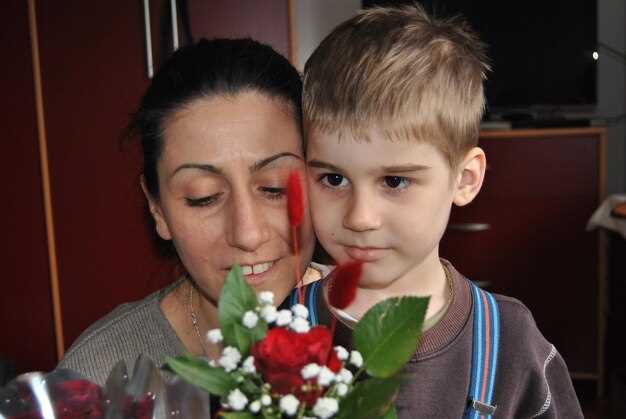Please start with a licensed pediatric neurodevelopmental assessment tonight; the results determine level of next steps for care, guiding family decisions, planning resources.
Months of observation yield data across seven domains; size of response to social cues, music exposure, level of engagement, early play shape the current profile. Reports from clinicians emphasize consistency in routines, though noting variability in sensory processing.
Privacy remains essential; Public interest triggers pressure; credible reports describe how a brave family kept routines intact while rebuilding daily life. earth messaging shifts with each announcement; les amount of speculation tied to social feeds couldnt test caregivers; official announcements provide reliable context, please rely on those instead.
To support development, build predictable routines in a calm home; middle path between public narrative, family needs. Establish a small team of professionals; track progress across seven metrics, maintain private accounts of milestones, loved ones informed through concise sources; ensure privacy remains intact.
Months pass, the official announcement remains the reliable touchstone, says clinicians who monitored progress. For families, the focus should be on measurable milestones, size of gains, level of social engagement; seek resources that match the child’s needs, please consult local services, school teams.
Months After the 8th Child Announcement: Key Updates and Public Disclosures
Make this your priority: review official disclosures first; they outline guardianship status, timeframes, health notes, plus messaging plans.
- Guardianship status: The responsible circle has framed temporary oversight focused on welfare; timelines point to a review in the early months of next season.
- Sensory development notes: Clinicians describe sensory processing supports; early indicators discussed publicly by the mother; recommendations emphasize a steady routine at home.
- Public communications: Clips captioned from a party show balloons; music; warm interactions; broadcasts emphasize privacy boundaries; headlines remain cautious rather than sensational.
- Outreach; appearances: Planned public appearances appear in schedules; marketing materials reference a broader care narrative; clips circulate as basic advertisement rather than exclusive content.
- Family dynamics: The duo tends to deliver messages as a unified front; some statements focus on making experiences meaningful for this child; privacy remains a priority.
Practical guidance for followers: Track official channels; avoid rumor streams; check time-stamped releases; verify with quoted sources; monitor language used in captioned posts.
Public Statements About the Son’s Autism
Rely on verified, direct notes from the couple’s public representatives; avoid speculation that rides headlines; await official quotes. Head editors should verify context before amplification.
On late November Tuesday, those close to the household stressed care in communication; Starred headlines inflate drama; no formal medical update was disclosed.
Public clips show newborn attire during a quiet room moment; fans hoped for clarity; the message remained focused on support, inclusion.
Those remarks emphasise better understanding; fear persists among caregivers, pain exists, yet sharing experiences aims to reduce stigma; revealing details remain off-limits.
Stop sensational speculation; there is no verified mention of chemotherapy, nor any reference to private trials; she herself emphasized dignity and privacy. Rumors that someone died are unfounded.
Middle of this phase requires patience; those speakers admitted restraint; Having patience remains critical for accurate interpretation; the host coverage should maintain a respectful tone.
Better messaging, not rumors, shapes how the public perceives the whole situation; Host coverage should avoid rehashing same rumors.
Count on credible signals; zillion repeats of clips fuse into noise; stop distributing misinfo; this approach has ever prioritized restraint.
Proud supporters note progress; this stance keeps focus on care; better resources inspire trust; ever mindful audiences deserve clear guidance.
Timeline of Public Announcements by Nick Cannon and Abby De La Rosa
Verify dates from official posts; compile a precise timeline below.
| Date | Event | Public Source | Notes |
|---|---|---|---|
| 2021 Q1 | Pregnancy announcement by the host; dancer confirms | Instagram posts; media coverage | bells rang in media; kept details brief; something notable; really a turning moment; wasnt lengthy |
| 2021 mid-year | Birth of heir reported; hospital room photos released | Public posts; outlets | birth; room showcased white walls; known moment, marked rhythm change in life; kind notes from fans |
| 2021 late | First public appearance of the child | Social media updates; stories | appearance described in several stories; even fans noticed white outfit |
| 2022 | Doctors notes on ongoing checks; care spending | Interviews; press statements | doctors involved; spending on care highlighted; caring routines described; also, hand on approach |
| 2022-2023 | alyssa linked to broader family narrative; though the host kept focus on heir raising | business stories; entertainment reports | alyssa referenced in several accounts; the duo keep focus on upbringing; having impact |
| 2023 | Public messages on parenting; putting children first; stop speculation | interviews; social posts | powerful statements; putting heir first; stop speculation; getting clearer on upbringing |
Autism Basics Relevant to This Case: Signs, Diagnosis, and Therapies
Recommendation: if concerns arise, initiate developmental screening promptly; request a formal evaluation by a multidisciplinary team.
- Signs in three domains: social communication; restricted, repetitive patterns of behavior; atypical sensory responses. For a 5-month-old, look for not turned toward voices; limited cooing; minimal shared smiles. In a toddler, observe reduced mutual talks; late language milestones; a preference for solitary play. A noticeable gap within the scotts household may appear as changes in play style; an 11-year-old sibling may notice altered communication. When such signs cluster, count red flags to trigger screening.
- Diagnosis: formal determination requires a multidisciplinary evaluation after screening raises concerns. Pediatricians employ developmental screening tools; M-CHAT-R/F helps for young children; for confirmation, teams may use instruments such as ADOS-2; ADI-R. Assessment covers language; social interaction; play development; patterns of restricted interests. Diagnosis is not based on a single test; it reflects behavior across settings over time. A private plan can help the family take questions to the clinician; though evaluation may feel overwhelming; results arrive with a mix of relief and concern. In some cases, the workup may include medical ruling out other explanations, such as a tumor; a clinician may propose imaging or tests if red flags persist. Caregivers take notes during visits; though, though, results guide next steps.
- Therapies: evidence-based options include ABA; speech therapy; occupational therapy; social skills training; sensory integration; music-based strategies; family coaching. Each plan builds communication abilities, play engagement, daily living skills. Early start yields stronger progress; therapy may run alongside school supports; the plan remains individualized; caregivers take active role; without specialized supports, progress is limited; a singer-led session may help with rhythm; within the home, live practice takes place; together with teachers, set a flexible level of expectations; use striped sensory tools; track true progress; then adjust plan. For a bigger picture, a true focus sits on the family routine, though collaboration with educators matters.
caption: Quick reference for families listing signs, screening steps, and local resources for support.
Thoughtful caregivers can build a stronger plan by taking time to observe, then take action; though the path may feel challenging, wonderful progress remains possible for those who stay engaged. A thoughtful approach helps a 5-month-old develop early communication abilities, while a bigger, 11-year-old may live with a more inclusive plan, thanking the team for cooperation; though results arrive at their own pace, true change tends to arrive when plans are followed together with trusted professionals.
Privacy, Media Coverage, and Respect for the Family
Recommendation: Establish a formal privacy protocol within 48 hours; designate a single, trusted spokesperson; create a closed media channel; use Alyssa as a friend contact; Howard serves as a family liaison; protect their privacy; restrict requests to official statements; decline speculation about health, private relationships, or medical details; share information on publicly relevant topics such as charitable work or professional projects; provide a full, elaborated update plan around key milestones; keep responses to a twelve-month horizon where possible; avoid hell rumor mills by sticking to verified facts; present a pretty clear rhythm that reduces guesswork.
Media coverage should follow professional guidelines: verify facts before sharing; avoid naming relatives; minimize live interaction from private moments; photos dressed for public events should come only through approved channels; when a medical update is planned, coordinate with the spokesperson; keep privacy around the home under privacy guidelines; schedule updates around times that reduce intrusion; adopt a calm rhythm even during a busy schedule; prefer written statements over lengthy interviews; treat November milestones with care; resist sensational series that look for drama where privacy is possible.
Respect for the family means acknowledging boundaries set by the couple; avoid speculation about neurodevelopmental differences; address topics with care; if a public figure chooses to discuss therapies or support resources, share only through approved channels; provide context that this is a private journey evolving with years; highlight resources like therapist notes or accurate medical guidance without revealing private details; avoid captions that dress a parent as daddy; if surgery or other medical milestones occur, wait for official statements; once events concluded, they went home to regroup; when balloons around the home appear at a public moment, treat them as personal; interaction with the public should be polite, not intrusive; never pressure for comments; avoid discussing cancer risk or treatment unless it comes from official statements; awakening that this path benefits from slow, respectful coverage.
Practical Steps for Families: Support, Resources, and Local Services
Begin with a formal developmental screening through a local pediatrician; just request a multidisciplinary assessment from a professional team to map supports for the child.
At home, establish predictable routines, short communication steps, visual supports; involve a trusted partner alongside planning, putting ideas into practice, a steady hand guiding decisions, so caregiver rhythms feel sustainable.
Seek community resources: early intervention programs, parish or state services in Orleans, nonprofit helplines, parent peer groups; several options exist to access therapy, respite care, caregiver coaching, financial guidance. This humbling process requires a professional team joining with a partner to craft a realistic plan. For broader health needs, cancer survivorship resources; mental health supports; budget guidance.
Look for local clinics, hospital programs, school supports; search talks, clips; parent series that explain therapies, milestones, home strategies in simple terms. July workshops, pink-themed events, community activities in orleans keep families connected; plan visits after a quiet home walk to minimize stress for visitors, the child; eighth milestone checks can guide therapy pacing.
Caregiver well-being matters; the humbling path of motherhood requires rest, connection with a partner, honest talks; include short breathing breaks; a surprise support visit by guests can ease the knot of isolation; in hard moments, share a secret coping method such as a 20-minute walk for calm; soul support matters. When observations came, tweaks follow.
Introducing alyssa as a local peer mentor through a short series of quick clips. later, integrate her insights into care plans, noting progress milestones. This resource pack helps guests at home participate in calming routines.

 Nick Cannon and Abby De La Rosa’s Son and Autism – What We Know">
Nick Cannon and Abby De La Rosa’s Son and Autism – What We Know">


